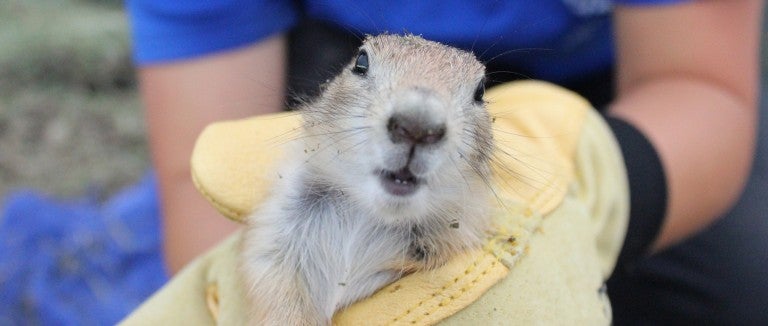
As keystone members of the ecosystem, prairie dogs deserve protection and coexistence.
SHARE

Prairie dogs are one of the most controversial and widely misunderstood wildlife species in North America. Since early European migration onto the North American grasslands, prairie dogs have been celebrated as an essential keystone species for healthy grasslands ecosystems, but also vilified and, in some locations, managed as destructive rodent pests. Human-caused changes to the grasslands stemming from crop agriculture, livestock grazing, energy development, residential and commercial development, prairie dog shooting, poisoning campaigns and plague (an introduced disease) have caused the five species of prairie dogs to disappear from an estimated 87-99% of their historic (1800s) range, depending on the species.
Though prairie dog habitat has decreased tremendously and their numbers have dwindled dramatically, people are still trying to wipe out these highly social creatures. For some, prairie dogs can present challenges as their burrow mounds and colonies use the same space as crops and can make grasslands difficult to navigate for livestock. Because prairie dogs also eat grass, ranchers and farmers view them as a threat to their livelihoods. Common methods used to remove prairie dog colonies include shooting, poisoning, contest kills and even bulldozing when they face a developer’s path in the urban areas.
Organized shoots on public lands kill large numbers of prairie dogs in a single day and negatively affect the social structure and health of the colony for years to come. Over 150 wildlife species including hawks, eagles, songbirds, foxes and even nematodes are associated with prairie dog colonies. Prairie dogs are like the canary in the coal mine—what happens to them is happening to other animals on the prairie.
Conflict reduction plans and coexistence offer a more wildlife friendly and humane solution to issues that arise for both wildlife and people.
Sometimes the damage that animals actually do is much less than believed and sometimes what some see as "damage" is actually a benefit that goes unappreciated.
Recent studies on the overall ecological benefits of prairie dogs suggest that their critical role in encouraging biological diversity has been overlooked. For example, many folks don’t like the looks of dirt patches on prairie dog colonies, but those dirt patches are the perfect camouflage place for the mountain plover (a songbird in decline) to build a nest and lay their eggs.
Additionally, it's hard for some folks to give up a grassy looking turf. Prairie dogs clipping and digging activities create more small shrubs and forb plants and less grass sometimes. This creates more biodiverse and healthy habitat even though it may not look the way some of us want it to.
Many grazing animals, including domestic cattle, prefer to graze within prairie dog towns. Interestingly, prairie dogs prefer to build their colonies in areas that have been overgrazed since the low vegetation allows a clear view of potential predators.